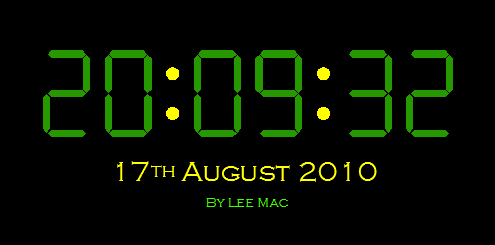Search the Community
Showing results for tags 'reactor'.
-
reactor Reactor; CallBack func; error: Automation Error.
costin calin posted a topic in AutoLISP, Visual LISP & DCL
Hello, I have two reactor and two problems in callback functions. I have inserted same princ to be evident where is the error. Outside (from CallBack func reactors) they works properly. It seems that some LISP function are not compatibile to work in callback func (vlax-ename->vla-object,...-
- fields
- dymamic block
-
(and 1 more)
Tagged with:
-
Hello! I'm performing a count in order to create a report from a dwg file. Counting functioncan be called at any time, but necessarily runs on close - when I also count the edit time. For that I'm using a reactor. That works fine. Prior to start the counting I'd like to ov...
- 6 replies
-
- vla-sendcommand
- overkill
-
(and 1 more)
Tagged with:
-
Hi, I need use (command ".save" pth) in my reactor for automatic back up after 30 minutes. But I can not figure out how to write this in Visual LISP. I want save current unsaved dwg to new file, but current dwg has to remain unchanged and still be active. Method (vla-saveAs doc) makes new...
-
Hello, I have problem with command reactor. I want to dress up (add some blok, put viewport in specific layer) all new layouts created by command „layout“ with option „New“ or the „plus“ icon in layout list panel. How can I find out the event (new layout) is occured? And how can I get reference to...
-
Issue with calling a .NET LispFunction with a Reactor
ColinHolloway posted a topic in AutoLISP, Visual LISP & DCL
Hi All, I have just hit a wall with some code I am working on and wondered if anyone had seen a similar situation (and found a solution). I have written a .NET routine that I use to control which Ribbon Menu Tabs and Panels are visible based on arguments passed to the routine. This runs cor... -
So I want to be able to set things inside functions when the command is called up in the command line. I tried using a command reactor. It works fine when it is outside of the function that I wanted for it to be activated but when I put it inside the function, it doesnt seem to be getting the values...
- 9 replies
-
- autocad
- command reactor
-
(and 2 more)
Tagged with:
-
Hello, I am trying to get a LISP reactor to work whist a function is running. So my scenario is, is that I have I have a function that draws certain things in AutoCAD. While this function is running, I want to have my reactor activated, so it sets things and when the function is cancelled, the react...
-
I want a command reactor to be able to activate inside a function however I am not sure if command reactors work with a user defined command or function. For an example, I want to be able to get the reactor to work on some (defun c:drawsomething () ....) and I want it to look for when the command dr...
-
How do I have a command causes a function to
WPerciful posted a topic in AutoLISP, Visual LISP & DCL
I wrote a sub-routine to update drawing borders. There is a command in CADWorx called IGO which creates isometric drawings. I wanted have this command call my function which updates the borders. But my code doesn't work. (defun c:igo ( / ) (setvar "cmdecho" 0) (command "igo") (setvar "cmdec... -
Hi everyone! I just want to start by thanking you all, as most of the times I have an issue this forum is a great resource in which I find many answers without having to create a thread Since we use Acad 2014, some of my coworkers have started using viewbase style views. Since we have standa...
-
Hi CAD lovers, Is it possible to distinguish between drawn objects (created by commands like: LINE, CIRCLE, ARC, ...) and constructed objects (created by commands like: OFFSET, FILLET (with radius), Chamfer (with distance), COPY, MIRROR (retaining source objects), ...)? Any help greatly appreci...
-
Hi CADmates, as most of you know, CommandWillStart and CommandEnded are two reactors triggered just when a command called and a command ended. I am looking for a way to control OPEN command after selecting a drawing and before actually OPENing it. Is this mission possible? Any suggestion...
- 7 replies
-
- open
- commandwillstart
-
(and 2 more)
Tagged with:
-
Hi, I recieve a number of drawings from outside the company. Not too suprissing they don't use that same printers, not to mention IT has a habit of changing print servers every couple of years. We have switched to using PC3 files which has helped some, but I'm still lef with a large set of leg...
-
- plot
- default printer
-
(and 1 more)
Tagged with:
-
Hi all, who knows a way to cancell a command via reactors Here is my code of traping event of starting commands. I want to prevent AutoCAD of continuing some commands, with no success: (VLR-Command-Reactor nil (list (cons :VLR-commandWillStart 'Reactor:commandWillStart ) ) ) (de...
-
Hello every body, is it possibleto retain reactors attached to objects in dwg file, without running a program in subsequent sessions:unsure:?
-
All, I am looking for a way to create a reactor that changes a system variable back to specific variable when it is changed by a User or AutoCAD. Specifically i am talking about MLEADERSCALE, you might have noticed that if you have several styles and you switch between them your Mleaderscale...
-
Let me state from the outset that I realise that there isn't too much practicality in this application, and hence I consider it more of a novelty app for your amusement and enjoyment. I have seen a few similar programs that will create a clock interface and proceed to animate the interface u...



